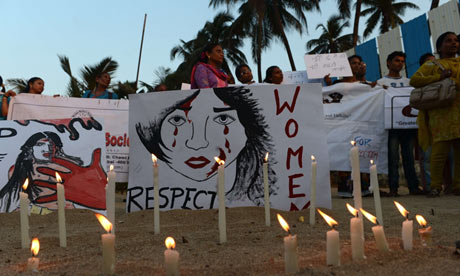With the release of the report titled ‘The most dangerous countries for Women – 2018’ by Thomson Reuters foundation which ranks India as the most unsafe country in the world, the defenders of national pride are out to argue the flaws of the report. The report was based on an expert opinion of about 548 persons which included aid and development professionals, academics, health workers, policy makers, NGO workers, Journalists and Social Commentators. About eleven parameters were considered which also included sexual violence, healthcare, discrimination, cultural traditions and human trafficking.

The critics included National Commission for Women (NCW) which has raised questions on its sampling methodology. The Central Government has argued that this is an ‘effort to malign the country’. The response on the Indian side is that of a denial. It is unwilling to see its mirror reflection. Shefali Vaidya, the BJP MP also went on the say that ‘few countries are as safe as India’. The defenders of the national pride while on the one hand are in a ‘rejection mode’, on the other hand forget the fact that the nation also constitutes its half population which is made up of female gender.
Without getting into ‘correctness of ranking’, it is important to look into the issue and inquire if India is really becoming safer for Women. Two days after the release of the report, Mandasur in the Indian state of Madhya Pradesh witnessed media coverage over the rape of an eight year old girl child. India had not even recovered from the violence that was inflicted on Asifa, the eight year old girl child in Kathua. Similar incidents were also reported from Surat in Gujarat, Mainpuri and Sitapur in Uttar Pradesh, Nagaon district in Assam and Indore in Madhya Pradesh in 2018. According to a report by Child Relief and you, ‘sexual violence is committed against a child in India every 15 minutes’.
According to the National Crime Report Bureau statistics 2016, the reported cases of child trafficking victims were 763, incidents of selling minors for prostitution were 135 and victims of child rape were 19,920. These were the reported cases for 2015-16. It is to be remembered large number of cases do not get reported at the police stations.
No effort in the direction of legislative actions, judicial decisions, strengthening of law enforcement machinery, social boycott seems to be putting an end to this deadly cancer. The disease of rape and sexual violence is so ingrained in Indian society that it does not have an age. Right from an infant, child, adolescent, young, middle aged to an old – everyone seems to be unsafe. It does not have a relation. Reports on violence against women indicate that the biggest inflictors of violence also include own family members, relatives, neighbors and working spaces.
The social conscience of the Nation seems to be accepting this as a new ‘normal’. The nation which projects itself as respecting ‘women’ and ‘Bharatiya nari’ is nowhere in reality close to respecting women-hood. Having a set of female goddesses ‘Durga, Laxmi, Saraswati’ doesn’t make the Indian society a women friendly and gender sensitive society. The culture of having female goddesses at the most provides a justification of how the society treats its women. It hides the reality of what happens within families, communities and nationhood.
The patriarchal culture is so ingrained in Indian society that women end up incorporating them from their birth itself. If the girl child is able to escape ‘female infanticide’, then in the process of growing up she is taught how to behave, how to talk, what to dress, where to go and not go. The decisions in each stage of life are taken by men. An independent identity of women goes unrecognized. The child ends up listening to the stories of ‘sita’ and ‘savitri’ and ‘sati’ and ‘jauhar’ where female identity is subordinated to male identity.
While women tend to be victims, the burden-hood of prestige falls on the women. It is only through projecting that women are safe that the prestige of family, community and nation are glorified and defended. Hence it is not surprising that they become ‘ghar ki ijjat’ (prestige of family), ‘samaj ki ijjat’ (prestige of community) and ‘desh ki ijjat’ (prestige of nation). While family inflicts violence it comes with its narrative of family prestige falling on women. While community inflicts violence, the khap or samaj panchayats puts the burden of prestige on women. The same happens with the nation.
The stated position of ‘defenders of national pride’ needs to be seen in this light. For them, the naming of India as the most unsafe place for women in the world hurts the ‘national soul’ or the ‘national prestige’. Hence the strong need to reject the report and justify why the nation is safe for women. Just as family and community does not recognize aspects of violence against women, so too the nation. A society which really feels the need to make itself safe and equal for women should dump the word of ‘prestige’ as it only covers up for the patriarchal structures and culture prevalent within.
Jayashubha is a post graduate in Organic Chemistry. She is interested in Gender and Social issues.